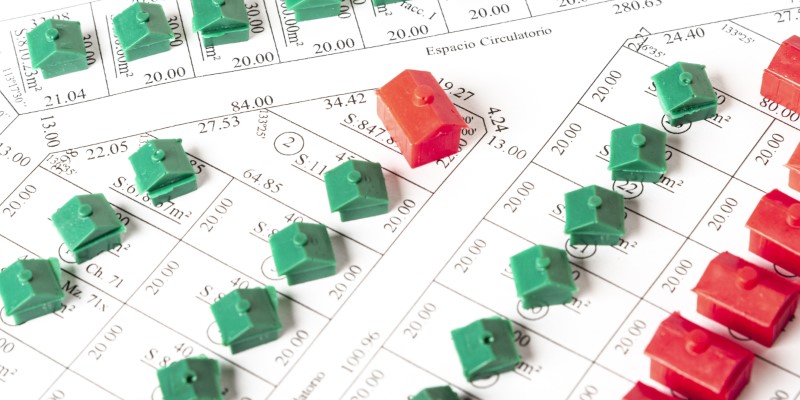Understanding Zoning Laws And Their Impact On Property Value
Author: Tooba
Zoning laws are local regulations that govern land use, dictating where and how specific activities can occur. These laws shape communities by organizing urban spaces, ensuring orderly development, and promoting public well-being. Their influence extends beyond city planning, playing a critical role in determining the value of real estate properties. This article provides a detailed look into the nature of zoning laws, their variations, and their impact on property values and ownership experiences.
What Are Zoning Laws And Why They Matter
Zoning laws classify land into distinct zones, typically residential, commercial, industrial, agricultural, and mixed-use, each with unique rules on what can and cannot be developed. Municipalities enforce these regulations to promote economic development, protect property values, and ensure public safety by preventing incompatible land uses within the same area.
Zoning also contributes to environmental preservation by limiting urban sprawl and safeguarding green spaces. Additionally, these laws help maintain neighborhood aesthetics and infrastructure standards, guiding cities toward sustainable growth. Understanding these regulations is essential for property owners and investors as they influence property development potential and market value.

Types Of Zoning And Their Key Differences
Zoning laws categorize land into various types, each tailored to serve specific functions and ensure organized development. Understanding the distinctions between these zones is essential, as they dictate permissible activities, property design, and community dynamics. Look at the vital zoning categories and how they impact property use and value.
Residential Zoning
Residential zoning governs housing developments, including single-family homes, duplexes, and multi-family complexes. Regulations within these zones can control minimum lot sizes, building heights, and setback distances from property lines. These areas often focus on preserving neighborhood quality by restricting commercial and industrial activities nearby.
Commercial Zoning
Commercial zones accommodate business activities, including retail shops, offices, restaurants, and service industries. Within these zones, municipalities may impose rules on signage, parking spaces, and accessibility to reduce congestion and encourage economic vibrancy. In prime business districts, commercial zoning can significantly elevate property values.
Industrial Zoning
Industrial zoning applies to areas intended for manufacturing, warehousing, and logistics. These zones are often located away from residential areas to minimize noise, pollution, and heavy traffic impacts. Industrial zoning restrictions may include environmental regulations concerning waste management and emissions control.

How Zoning Regulations Affect Property Value
Zoning regulations are critical in shaping property values by influencing development potential and neighborhood character. Land use restrictions help preserve the character of areas by preventing incompatible developments and stabilizing property values. For instance, residential properties in neighborhoods with strict zoning, particularly those near desirable amenities like top-rated schools, tend to appreciate as commercial encroachments are limited. Similarly, flexible zones that permit mixed-use developments often attract higher values due to their broader development possibilities, while overly restrictive zoning can reduce a property's market appeal.
In addition to aesthetics and land use, zoning designations affect property taxes and infrastructure development. Commercial and industrial properties often face higher tax rates, while residential zones enjoy more favourable assessments. Well-planned zoning promotes infrastructure enhancements, such as roads, parks, and public services, further increasing property desirability. Changes in zoning, such as converting residential areas to mixed-use zones, can boost property values by unlocking new development opportunities and providing potential windfall gains for property owners and investors.

Common Zoning Challenges For Property Owners
While zoning laws help maintain order in urban development, they can also present significant challenges for property owners, restricting flexibility and complicating investments. These hurdles can impact everything from small home renovations to large-scale real estate projects.
Rigid Regulations
In many municipalities, zoning laws are highly restrictive, limiting property owners' ability to adapt to market changes or personal needs. For example, areas zoned exclusively for single-family homes may not permit multi-family housing development, even amid rising demands for affordable housing. This rigidity can also affect businesses, preventing expansions or renovations due to height restrictions or setback rules. Such constraints make it difficult for property owners to maximize their land's potential, forcing them to comply with outdated regulations or face legal and bureaucratic challenges when seeking exceptions.
NIMBYism (Not In My Backyard)
Efforts to modify zoning laws or introduce new developments often encounter resistance from residents, a phenomenon known as NIMBYism. Homeowners may oppose projects such as apartment complexes or commercial facilities near their neighborhoods, fearing these changes will increase traffic, reduce property values, or alter the community's character. These objections can significantly delay or even derail development efforts, making it difficult for property owners and developers to proceed with projects that could benefit the broader community.
Exclusionary Zoning
Sometimes, zoning laws indirectly contribute to social and economic segregation by restricting affordable housing options in wealthier areas. Regulations that limit housing density or enforce minimum lot sizes can prevent lower-income residents from moving into specific neighborhoods, reinforcing economic divides. This exclusionary practice reduces access to essential services and amenities for disadvantaged groups, perpetuating inequality across urban areas. Addressing these issues often requires policy reforms, but overcoming opposition from established homeowners remains a persistent challenge.

Future Trends In Zoning Laws And Their Impact On Real Estate
As urban areas expand, zoning laws adapt to new challenges and opportunities. One prominent trend is the growing emphasis on mixed-use developments, which reduce car dependence and promote sustainable, walkable neighborhoods with convenient amenities. This approach reflects a broader push for urban density and efficiency, addressing environmental and social needs.
Additionally, many municipalities are revising zoning codes to support adaptive reuse, converting older buildings, like warehouses, into residential or commercial spaces. Future zoning regulations should also prioritize environmental goals by encouraging eco-friendly construction, renewable energy use, and green space conservation. At the same time, to address housing shortages, some areas are loosening restrictions to allow more multi-family developments, helping to increase housing supply and stabilize property prices.

Conclusion
Zoning laws are a crucial component of urban planning that affects property value, development potential, and community character. While they protect property values by preventing incompatible land uses, they also present challenges regarding flexibility and inclusivity. As zoning regulations evolve, staying informed about these changes will be vital for property owners, developers, and investors. Understanding zoning laws enables stakeholders to make informed decisions, unlock property potential, and contribute to the sustainable growth of their communities.



